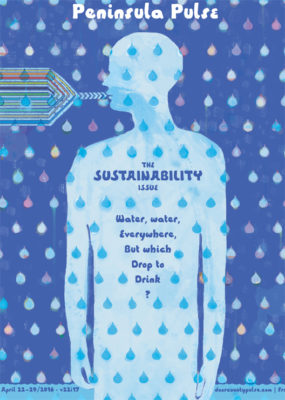What is Karst?
- Share
- Tweet
- Pin
- Share

You can’t talk about groundwater issues in Door County without talking about our karst topography, the rock that all of our soil, trees, plants and grass sits atop of.
Karst topography is a defining feature of the landscape of the Door Peninsula. In this area, the combination of shallow, gravelly soils above porous limestone means that water moves very quickly through the landscape.
Karst is a landscape with surface and underground features like caves, sinkholes, disappearing streams, and subsurface drainage. These features result when the bedrock (often limestone and dolomite) is easily dissolved by water. When the rock is dissolved, cracks and solution channels in the rock can form an underground drainage network. These cracks and channels can rapidly transport surface water and pollutants to groundwater. In karst areas, groundwater can move as much as 100 feet or more per day, while in other areas, groundwater typically moves less than one foot per day. Eventually this groundwater resurfaces at a spring, wetland, river or lake.
Water quality is an important issue in a karst landscape. The fractured bedrock and the lack of much surface soil means that rainwater drains through much faster. In these areas, fertile soils can look parched between rainfall events, even if the amount of rainfall is adequate. Groundwater contamination from sources such as septic systems, agricultural wastes, and pesticides and herbicides is a higher risk in karst areas, because slow underground filtering is absent.
Where the groundwater in cracks and channels intersects with the surface (such as at the base of hills), clean or contaminated groundwater emerges into wetlands and streams. The water quality in these wetlands is a good indicator of water quality throughout the landscape, including the water we drink from local wells.
Source: My Healthy Wetlands: A Handbook for Wetland Owners, Eastern Wisconsin edition, a publication of Wisconsin Wetlands Association and the Aldo Leopold Foundation, 2014.

